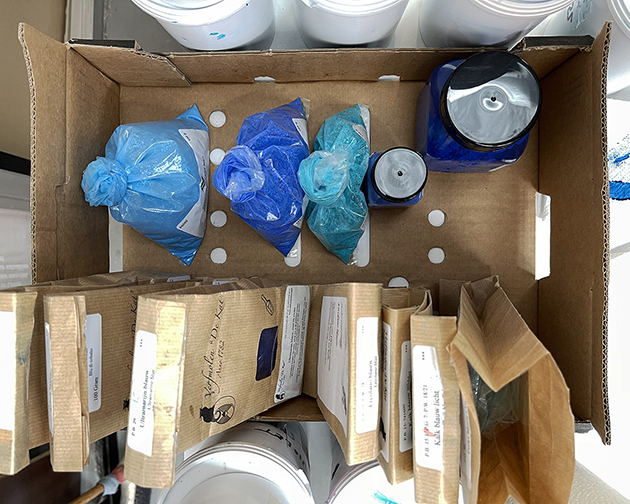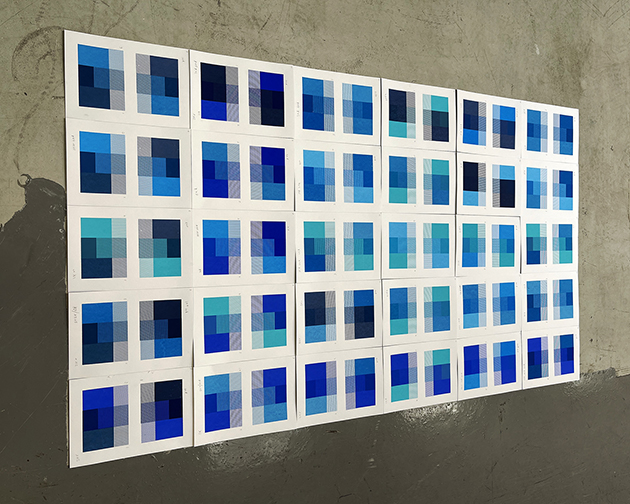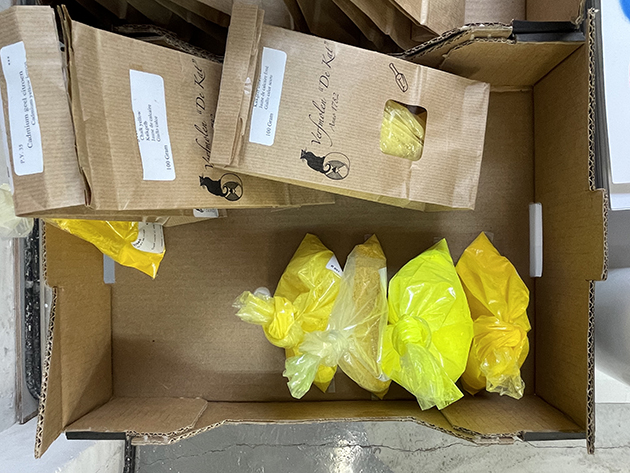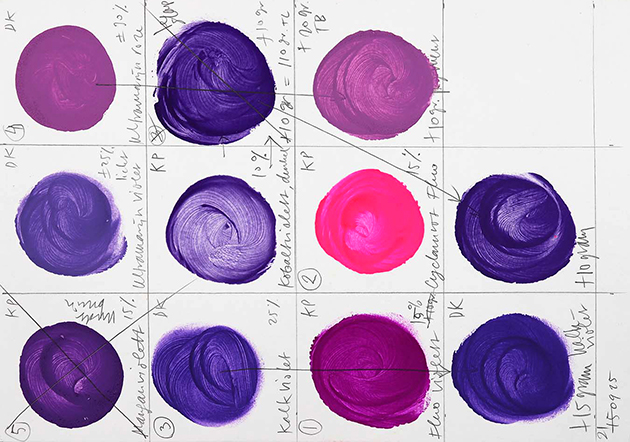Pigment Probing

Buying and trying 60 pigments from verfmolen De Kat and Kremer Pigmente, through a grant from Creative Industries Fund and Stichting Stokroos. Period: throughout summer 2025. Location: Paul Wyber Zeefdruk, Amsterdam.

To experience how individual pigments manifest as color on paper, I bought 60 samples, processed them into a printable mixture, and screen-printed them using a standardized method using a 77T screen and a medium shore sqeegee..

Kremer Pigmente (Germany) has a total of 1,145 pigments for sale. Verfmolen De Kat (Netherlands) has 108. How to choose? Historical pigments, very expensive, and toxic pigments were immediately out of the question. I couldn’t buy all 202 modern pigments either. Judging from digital reproduction photos, my choice was often a gamble.

At Kremer, I discovered that De Kat is a dealer for them, with the latter reselling altered products from the former as their own. This was the first source of confusion in an already complex field of knowledge. “…you’re walking into a maze,” my advisor Monica Rotgans said at the outset, and that’s how I experienced it.

Stefan Muntwyler’s Das Farbenbuch (CH), with realistic (18 colour offset) reproductions of color samples of virtually every conceivable pigment, provides clarity. The samples link directly to the Kremer catalog. Combined with Kremer’s own physical color samples, the catalog, and their scientific online database, a workable reference framework is created.

Criteria for suitability for water-based screen printing: unavailable or difficult to mix with the standard palette of my regular ink suppliers Sico and Sebek (B); tinting strength; price; non-toxic; non-perishable.

In general, the suitability for waterbased screen printing of many pigments purchased for this project disappointed me: 50% lack the tinting strength I’m looking for. 50% show potential. At least now I know exactely which categories to go to for the next batch.

Nevertheless, this probing has given me a great deal: greater knowledge of and experience working with pigments, which I can share with others; and new, sometimes incredibly beautiful color combinations that I will surely use in new work.

Many thanks to Creative Industries Fund and (Experiment) en Stichting Stokroos (Seed Grant) for making this investigation possible!